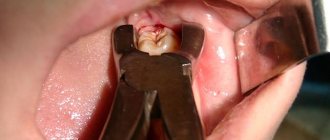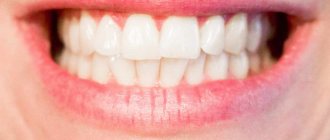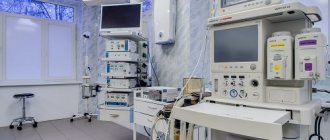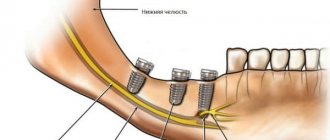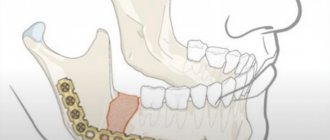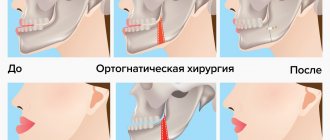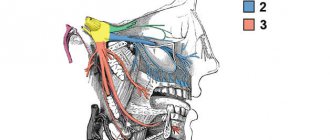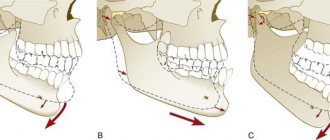More than thirty years have passed since the collapse of the Soviet Union, a lot has changed in medicine for the better, and people are still afraid to go to the dentist, remembering themselves or having heard from others how painful and unpleasant it is.
Anesthesia in Soviet dentistry was indeed a “weak link”, and many manipulations in the dentist’s chair were done without pain relief at all. However, now the situation has become much better, including thanks to the penetration of foreign drugs and technologies into our market.
The usual injection has been replaced by many different techniques. Of course, it’s still difficult to call a visit to the dentist pleasant, but it has definitely become much more comfortable.
Anesthesia
Modern anesthesia not only eliminates the patient’s physical pain during procedures, but also reduces his psycho-emotional stress - eliminates the fear of the doctor, which significantly increases the efficiency and quality of the specialist’s work.
Types of local anesthesia
Application anesthesia
This method completely eliminates the use of a needle and syringe. A small amount of a special anesthetic (paste, gel or ointment) is applied to the selected area with a cotton swab or fingers, which penetrates 2-3 millimeters into the soft tissue and blocks the nerve endings.
Application anesthesia
Since “freezing” acts for a short period of time (no more than 20 minutes), this method is more often used when performing simple and quick operations where it is necessary to anesthetize only the oral mucosa.
Application anesthesia is often used before the subsequent use of injection, especially if the patient is very afraid of injections, or when treating children.
The drug in aerosol form can also be used as an anesthetic. However, due to the complexity of calculating the required amount of anesthetic substance, this type has not been widely used in dentistry. The use of an aerosol increases the risk of complications, as it can easily penetrate the patient's respiratory tract and bloodstream.
Conduction anesthesia
This type of anesthesia is the most effective method in which the active substance is injected in small doses (no more than 5 milliliters in volume) using a special needle into a place located in close proximity to the nerve that controls the site of the intended intervention.
Conduction anesthesia
With this method, using only one dose of injection, you can achieve “freezing” not only of one tooth, but of a much larger area. To improve the effectiveness of the injected substance, the injection is given at an angle of 90 degrees. 15-20 minutes after the injection, the drug begins to act, and the doctor can begin manipulation.
The main advantage of using conduction anesthesia is the long duration of action of the drug - from one and a half to three hours. During this time, the doctor can work with several molars and adjacent soft tissues, perform a complex tooth extraction, perform surgery for a jaw injury, and much more. The duration of action of the drug can be increased by adding a dose of anesthetic if for some reason the duration of the operation has increased. Due to the fact that complete anesthesia occurs, the patient’s salivation decreases, which greatly simplifies the doctor’s work.
Infiltration anesthesia
In modern dentistry, this is one of the most common types of local anesthesia, in which the drug is administered with a syringe into the gum tissue. With this method, the nerve endings are blocked directly at the site where the anesthetic is injected. Currently, two methods of infiltration anesthesia are used: direct and indirect.
Infiltration anesthesia
Direct anesthesia - the medicine is directly injected under the mucous membrane in the place where dental procedures will be performed and the sensitivity of which needs to be reduced.
Indirect anesthesia - the active substance is injected at a distance of 2 centimeters or more from the site of manipulation, penetrates into the tissue and numbs a larger area.
The advantage of infiltration anesthesia is that after the administration of the anesthetic, in just a couple of minutes the doctor can begin work and the “freezing” effect lasts about an hour. This time is enough to perform implantation surgery, remove a tooth, treat pathological conditions of the gums and teeth, remove various tumors on the oral mucosa and other manipulations.
Depending on the area where the injection is given, infiltration anesthesia is:
- intraosseous (spongy) - the injection is placed directly into the bone between the roots of the teeth. It is most often used in the area of lower molars, during the treatment or extraction of teeth, when conduction and infiltration anesthesia are ineffective. This method allows for high-quality pain relief using a small amount (1-1.5 milliliters) of a weak anesthetic.
- intraligamentary (intraligamentous) - the anesthetic is administered with a special syringe under high pressure not into the nerve itself, but into the gum and jaw tissue, that is, into the periodontal space. Anesthesia occurs within a minute from the time of injection and lasts from 20 to 40 minutes. This is enough to perform outpatient procedures. This method of pain relief is low-traumatic, the drug accumulates to a greater extent in the injection area, so there is no gums during and after the injection.
- intracanal - performed using a drill. First, a hole is made in the tooth that matches the diameter of the needle, and then the anesthetic is injected directly into the pulp or deeper into the canal itself. Intracanal anesthesia is used as an adjunct to intraligamentary anesthesia.
Tuberal anesthesia
Tuberal anesthesia
When using this method, the anesthetic is injected into the tubercles of the upper jaw, which are called tuber in Latin. The posterior alveolar nerve is located in this area, thanks to which most of the alveolar ridge is “frozen”. The tuberal anesthesia method is rarely used, as it is considered dangerous from the point of view of the occurrence of various complications due to the individual structure of the jaw in this area and the location of nerves and blood vessels in it.
Advantages
The preference for using this method in dentistry is due to the following advantages:
- the ability to block sensitivity over a large area of the jaw for the alternate removal of several units of the dentition, opening purulent abscesses;
- the need to use a small amount of the drug compared to alternative methods of pain relief.
It is worth highlighting a number of advantages associated with minimizing the likelihood of complications:
- reduced risk of developing neuropathic syndromes;
- there is no possibility of the solution penetrating into the vessels;
- improving the quality of blocking the sensitivity of nerve endings;
- high efficiency for operations of any complexity.
Indications
Conduction anesthesia is performed before the following therapeutic measures:
- simultaneous extraction of several units of the dentition located in one area of the oral cavity;
- removal of tooth roots with inflammatory processes;
- removal of pathological teeth (for example, those that have grown into the gums);
- implantology (used for painless implantation);
- surgical intervention on the lower molars (molars);
- treatment of inflammation in the maxillofacial region;
- elimination of inflammation on mucous membranes and soft tissues;
- treatment of complex carious cavities;
- with intolerance to general anesthesia.
Maxillary anesthesia
- Palatal method. Allows you to completely block sensitivity in the palate area, making any manipulation absolutely painless. The action of the anesthetic spreads simultaneously to the alveolar process.
- Tuberal. This technique is used for operations or extraction of molars.
- Infraorbital. Suitable for treating canines, premolars, and incisors.
- Incisive. Anesthesia is injected into the mucosal area located between the incisors and canines.
Mandibular anesthesia
- Mental way. It is carried out for the treatment of premolars, incisors, and canines.
- Mandibular. It involves blocking all units of the dentition on the side where the drug is administered.
- Torusal. Involves the introduction of a solution into the roller of the movable jaw, called the torus. Allows you to block pain symptoms in the area of premolars, as well as molars.
There is another Bershe Dubov method. It is used for maxillofacial surgical interventions. Anesthesia applies to all elements on one side. The needle can be inserted intraorally or extraorally.
Restrictions
Before choosing a pain relief method, it is important to exclude contraindications. These include:
- some operations performed on patients under 12 years of age;
- disturbance of the psycho-emotional state in a pronounced form;
- skin diseases in the area of intervention;
- allergic reactions to antiseptics;
- patients with congenital deaf-muteness;
- inability to establish contact with the patient.
General anesthesia
There are times when the use of local anesthetic techniques is not suitable for a patient for a number of reasons. Then dental intervention is performed under anesthesia .
When using anesthesia, the patient is put into deep sleep, completely shutting off consciousness and pain sensitivity. Anesthesia is administered intravenously or by inhalation. It is rarely used in dental clinics, since administering anesthesia requires an anesthesiologist-resuscitator, as well as the availability of special equipment.
This pain relief method can be used to treat or remove teeth:
- in children under 5 years of age, since it is extremely difficult to carry out any manipulations in the child’s oral cavity;
- in adults due to severe fear of dental treatment, or due to an allergy to local anesthetics.
There are situations when the action of local injection anesthetics does not give the desired effect due to the patient’s increased psycho-emotional tension, or the person experiences panic fear before performing the procedures.
This problem can be solved using sedation . This method is suitable not only for patients who are afraid of performing dental procedures, but also afraid of the injections themselves. Unlike anesthesia, a person is fully conscious, can adequately respond to the doctor’s commands, and at the same time is in a state of relaxation and peace.
Contraindications
When choosing conduction anesthesia, both indications and contraindications are taken into account - since there are situations in which it seems necessary to use this particular method of pain relief, but it is not suitable for a particular patient. Contraindications are:
- Allergic reactions to anesthetics (in some cases, the issue can be resolved by individually selecting an anesthetic solution that will not cause allergies in the patient).
- Extensive and lengthy surgical interventions requiring other methods of pain relief.
- Some serious cardiovascular diseases.
- Decompensated diabetes mellitus.
- Mental illness in the patient.
- Pregnancy.
- Injuries of the maxillofacial apparatus, which led to anatomical and topographic changes in this area.
There are extraoral and intraoral methods of mental anesthesia.
Extraoral method Anesthesia technique When working on the right half of the lower jaw, it is more convenient for the doctor to stand to the right and behind the patient. When working on the left, the doctor is positioned to the right and in front of the patient. Using the above anatomical landmarks, the projection of the mental foramen onto the skin is determined. The index finger of the left hand presses the soft tissue to the bone at this point. Having given the needle a direction taking into account the course of the canal, the needle is inserted 0.5 cm above and posterior to the projection of the mental foramen on the skin. The needle is advanced downward, inward, and anteriorly until it contacts the bone. Inject 0.5 ml of anesthetic solution, carefully moving the needle, find the mental foramen and enter the canal, which confirms the feeling of the characteristic sinking of the needle. The needle is advanced into the canal to a depth of 3-5 mm and 1-2 ml of anesthetic is injected.
Mental anesthesia
Types of conduction anesthesia
According to the method of analgesic action:
- central conduction anesthesia - blocking the nerve trunk of the upper or lower jaw;
- peripheral conduction anesthesia - mandibular, torus, infraorbital, palatal, incisive, etc.
The most common method of anesthesia of the lower jaw is mandibular conduction anesthesia, which removes the sensitivity of the alvolar and lingual nerves. The analgesic effect extends to the area of the jaw: molars, premolars, canines, surrounding soft tissues and mucous membranes, areas of the tongue and lips.
By injection method:
- intraoral conduction anesthesia - an injection of the drug is carried out in the oral cavity;
- extraoral conduction anesthesia - the drug is injected through the skin of the face.
Indications for the use of conduction anesthesia
Conduction anesthesia is most often used for treatment in the lower jaw, but can also be used for the upper jaw. It is used in cases where infiltration anesthesia is ineffective:
- removal of several adjacent teeth or extraction of roots;
- removal of complex neoplasms, phlegmons, abscesses and other inflammations;
- treatment of caries and periodontal diseases with complications;
- patchwork operations;
- fractures and injuries of the jaw;
- orthopedic surgery, implantation;
- if other types of anesthesia are impossible or ineffective.
Technology of application of conduction anesthesia
Conduction anesthesia is a complex procedure, especially extraoral methods. Depending on the type and method of application, the methods of administering anesthesia also differ.
Before injecting the drug, the dentist may spray topical anesthesia onto the gums so that you do not feel pain from the needle. For conduction anesthesia, special carpules are used - ampoules with a strictly dosed amount of the drug. This avoids overdose and makes the dentist’s work easier. Modern dental capabilities and the use of effective local anesthesia take dental treatment to a new level - safe and painless. The patient is only required to remain calm and trust his attending physician, without interfering with his work.



